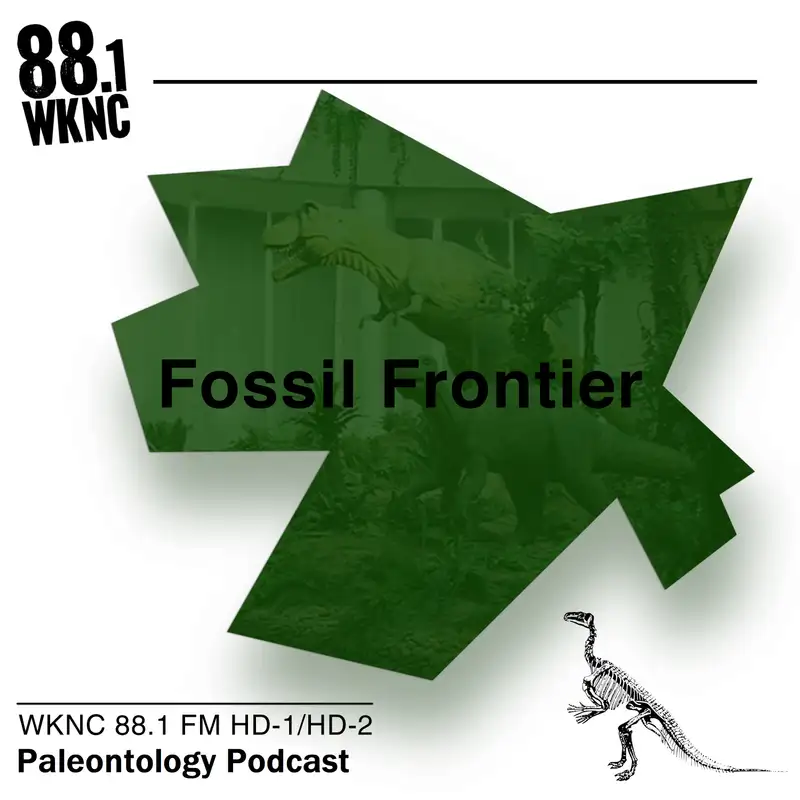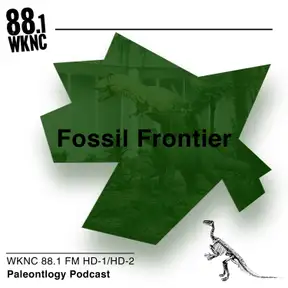Megalodon: The Largest Predator
Download MP3Scrimble 0:05
Music. Hello everybody. I'm scrimble. And welcome to the 11th episode of my podcast, fossil frontier, a paleontology podcast brought to you by wknc 88.1 this show will be dedicated to talking about my favorite fossils in prehistoric phenomena. We're going to explore some of Earth's ancient treasures and uncover the stories that they have to tell. So if that's something you're into, you better lock in, because this week we're talking about the Megalodon, the most formidable apex predator for over 10 million years. Okay, So picture this. You're a herpetoceus whale in the Miocene epoch, around 10 million years ago. Unlike your massive cousins, you're only about three to four meters in length, which is still considerably large. You've roamed the open ocean, basking in the sunlight available and feeding on plankton in the water. So far, things have been pretty peaceful. Some small fish swim by and some kelp floats through the scene. Unfortunately, lurking just below is an unforeseen predator, without time to react, a massive shark, resembling a great white but reaching over 20 meters long, swims up from below, you have no time to think before you're encased in its 10 feet tall Jaws with two rows of teeth the size of an adult human hand, it exerts a bite force of 150,000 Newtons onto you and instantly kills you, having just committed this astonishing kill. The shark swims on looking for another snack. This shark, of course, is the Megalodon, the biggest shark and the biggest predator that ever existed. These guys were terrifying with their jaws that could swallow a human hole. Its teeth could be up to seven inches long and have been found in the fossilized remains of animals from all over the world, like whales and dolphins and even seals. Its hunting style was very similar to that of the Great White attacking prey from below, but because of its strong jaw, it likely went for the chest, first puncturing the ribs and going for the heart of its prey. Everything we know about the Megalodon today, along with every other extinct shark in the world, has been deduced from only its teeth. You see, because sharks don't have bones, their bodies are not normally fossilized, leaving only their teeth to tell us about these ancient giants. Fortunately, even with just the teeth, scientists can determine a lot about the animal, including its diet, habitat, behavior and more, because of the Megalodon similarities to the Great White scientists first classified it in the same family lamnidae And genus carcaradon, but they were later reclassified into a much older and much more prominent group, Otodus, or megatooth Sharks. This genus is fully extinct, but it has many giant sharks, like the Megalodon. But how did these guys get to be so big and what eventually caused them to go extinct? Well, their large size can be attributed to both the climate and an evolutionary arms race between predator and prey. You see, during the Cretaceous Period, waters were much cooler, which meant that the warm blooded animals living in them needed to find a way to stay warm. This caused the whales and seals to bulk up, getting bigger and keeping more fat reserves. The predators also did the same thing, partly to stay warm and partly to be able to take down their now massive prey. With their prominent body size, they required a lot more calories to maintain their metabolism. There are estimates that the Megalodon ate roughly 2600 pounds of food a day, but unfortunately, their larger than life conduct was not sustainable, and they eventually died out by the early Pliocene Period. But how was there an even bigger predator that killed them off, or was it just a slow and gradual decline, perhaps a little bit of both, about 4 million years ago, the ocean climate was different than ever before, which caused whales the main food source for the Megalodon to migrate north, where the water was cooler, to find food. In turn, they got much bigger as well. This is known as gigantism in baleen whales in. Either way, the whales were simply too big, and they lived in places that were too cold for the Megalodon, so they lost their main food source. On top of that, there were also new predators emerging from the sperm whale to the carcharodons or modern sharks. These guys were competition for the Megalodon. And in this case, size didn't matter, if anything, their large size was actually an obstacle for them. The smaller, more nimble sharks out competed them for their prey, and because the Megalodon needed so much food to survive, this hit to their supply led to their downfall, and they were soon extinct. Ultimately, during the Megalodons 10 million year run, they were the largest and most formidable predator in the ocean, striking fear into the hearts of any whale or large sea animal that dared cross its path, and even to this day, the shark still holds the record for the largest predator on Earth. While their overpowered jaws and hunting style were impressive, it was just that that led to their demise. The story of the Megalodon just goes to show life isn't all about being flashy and the most powerful predator in the ocean, because in the end, it was adaptability and humility that were the key to survival in this ever changing world. Thank you for listening to the 11th episode of fossil frontier. This has been a wknc podcast. Good night, and I love you. The audio used in this podcast was song, Thresh, nature, field recording, garden atmo, recorded by Garuda 1982 under Creative Commons license. You.
Transcribed by https://otter.ai

